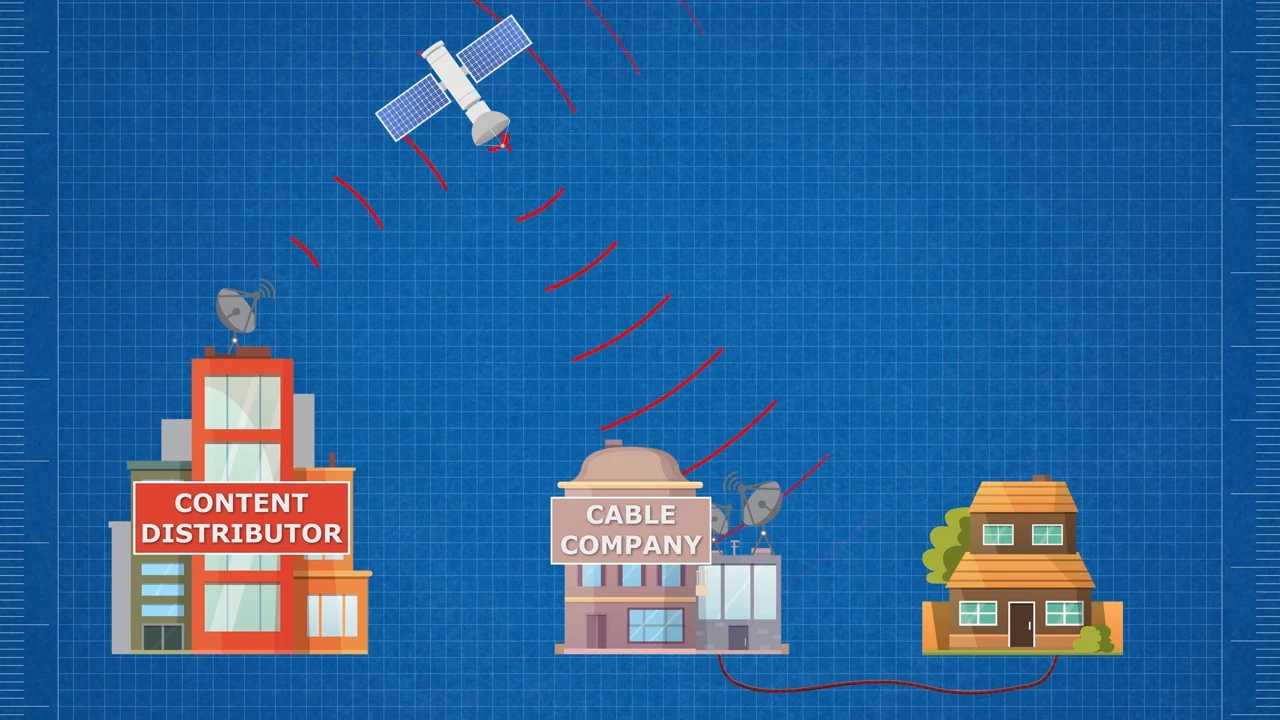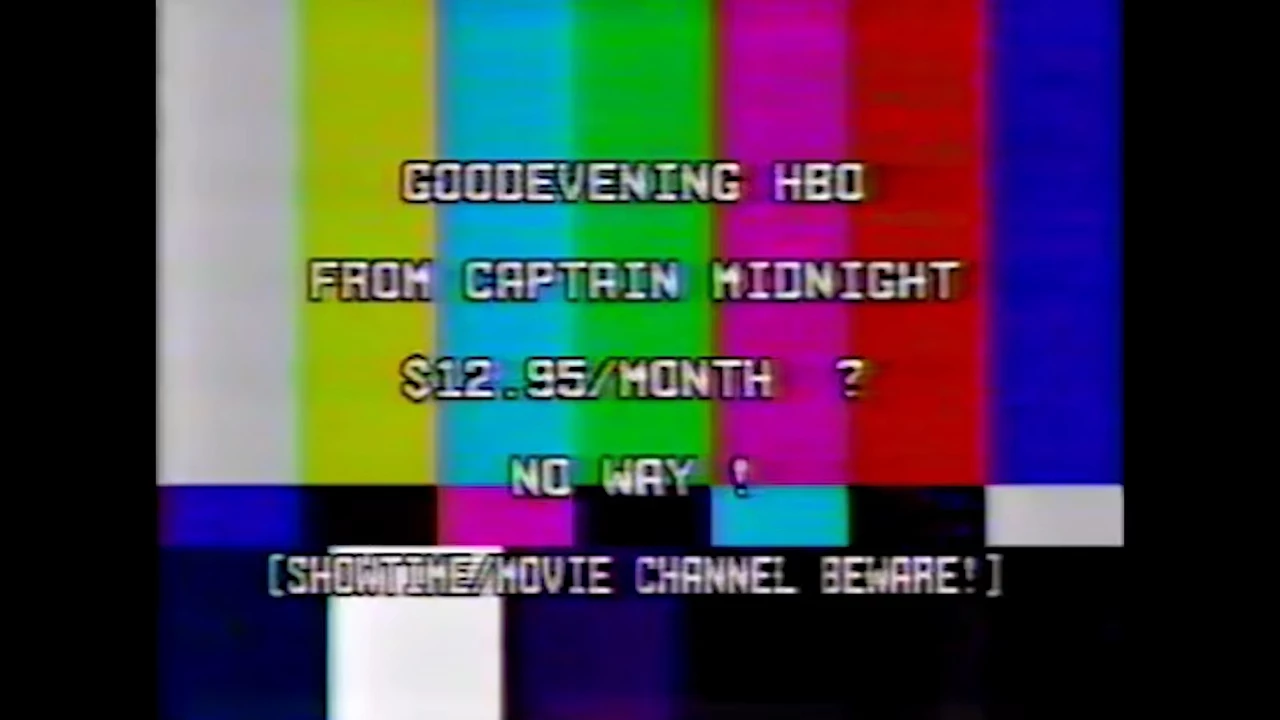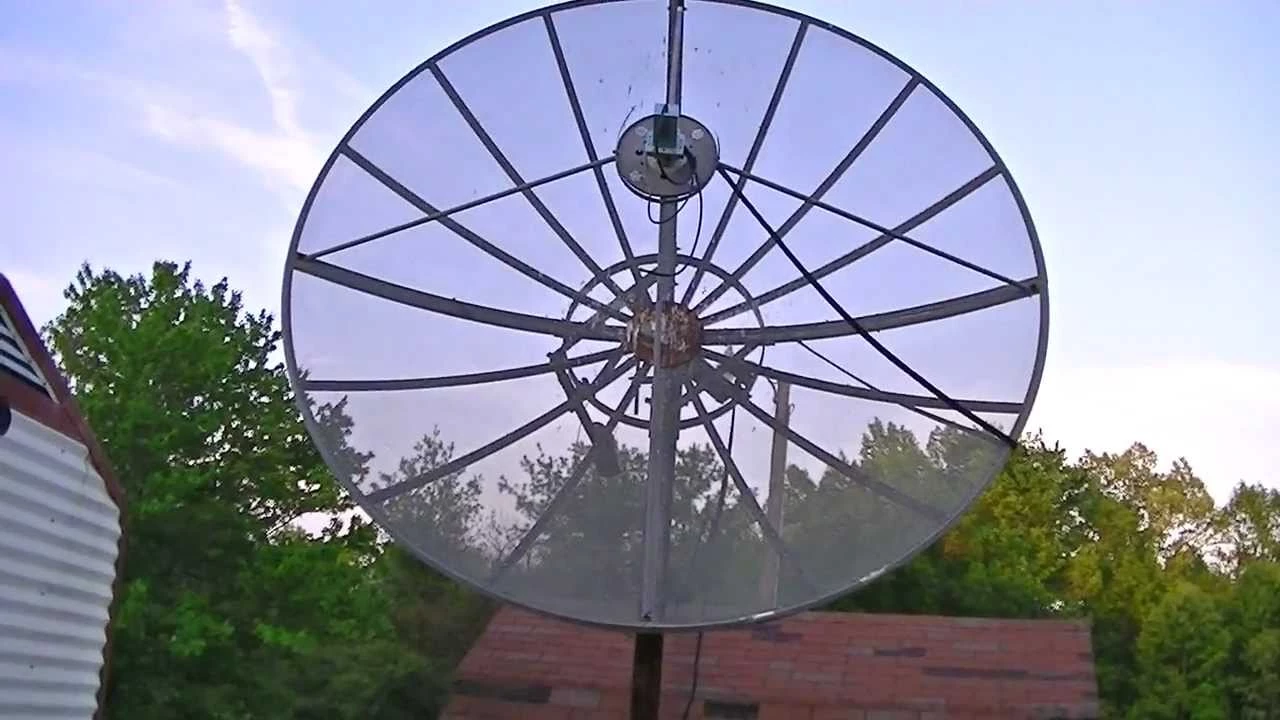If you're old like me, you probably remember those big, ugly satellite dishes adorning people's backyards. They were big enough for a kid to skateboard in. But even during my heyday in the 1990s, no one I knew who actually had one used it anymore. So what was the point of them? Whatever happened to them? And why were they so absurdly large in the first place?
Back in the late seventies and early eighties, satellite TV was not something that required a paid subscription. Instead, satellite signals were just out there floating around for anyone with the right equipment to catch.
You see, these signals were sent out by TV distributors and were intended for cable TV companies, not regular consumers. The cable companies would receive the signals, combine them into a cable TV package, and then sell that package to you and me at home via wires.  But because the assumption was that it would just be cable companies receiving the TV signals, distributors didn't bother scrambling them. So inevitably, folks at home figured out you could just use a big old dish to watch tons of pay-TV channels for free. And even folks who weren't trying to get around paying for cable found satellite dishes useful, since the only way some people could pick up their free local channels was via satellite. This was especially true in high-altitude regions, where the terrain would block typical TV antennas. In fact, these large satellite dishes became so calm and mountainous West Virginia, that a common joke was that the big ugly dish was actually the state flower.
But because the assumption was that it would just be cable companies receiving the TV signals, distributors didn't bother scrambling them. So inevitably, folks at home figured out you could just use a big old dish to watch tons of pay-TV channels for free. And even folks who weren't trying to get around paying for cable found satellite dishes useful, since the only way some people could pick up their free local channels was via satellite. This was especially true in high-altitude regions, where the terrain would block typical TV antennas. In fact, these large satellite dishes became so calm and mountainous West Virginia, that a common joke was that the big ugly dish was actually the state flower.
The reason these dishes had to be so big was that these signals were sent on something called C-band. This is a frequency range that's lower than what modern satellite TV uses, and their maximum power was also lower due to a rule meant to prevent interference. The longer wavelengths and lower power meant you needed a big dish to catch these big waves. Adding to the inconvenience was that these dishes had to be pointed more directly at the satellite itself than modern systems. So high-end setups often had a little motor attached the dish to rotate the dish when you change channels.
But this didn't mean that C-band dishes were inferior in every way to the tiny ones we're using now, believe it or not, the longer wavelengths meant that they were actually more resistant to bad weather than current receivers. So how did something that got you a bunch of free content wind up being obsolete?
Well, as you've probably predicted the TV industry wasn't too happy about so many people viewing their content without paying. Some things never changed. And starting in 1984, the US government started allowing broadcasters to scramble their signals. This meant that you now needed to pay for a D scrambler in order to legally watch satellite TV.
Needless to say, people were very upset that they now had to pay subscription fees after already spending a ton of money on the dishes themselves. Because they're bulk, these big dishes were expensive. The first one cost about $36,000 back in 1979. And although these prices dropped quickly to the point that they were going for 1500 bucks in 1985, that was still a huge investment. There was actually this one guy who ran his own satellite TV business, who was so upset he was actually able to overpower HBO's signal and insert his own protest message for a few minutes back in 1986. What a legend.
But this conflict between broadcasters and viewers wouldn't last long as direct broadcast satellite started getting popularity in the early 1990s. That's when I came around.
These are the services such as DIRECTV that use the higher frequency KU and KA bands that can legally be transmitted with higher power. Mean you only need a smaller, cheaper dish. Naturally, the lower equipment cost made them much more popular with consumers than those massive old school dishes, which quickly fell out of favor.
However, C-band is actually still used for backend TV distribution because of its advantages in bad weather. But as for those old dishes we used to have in our yards, people have repurposed them as everything from long range, Wi-Fi antennas to gazebos, to bird baths.


No comments yet